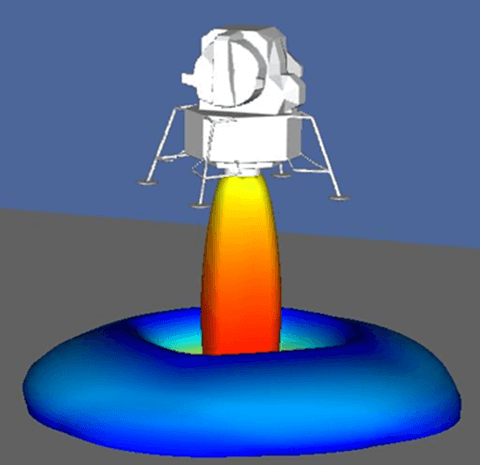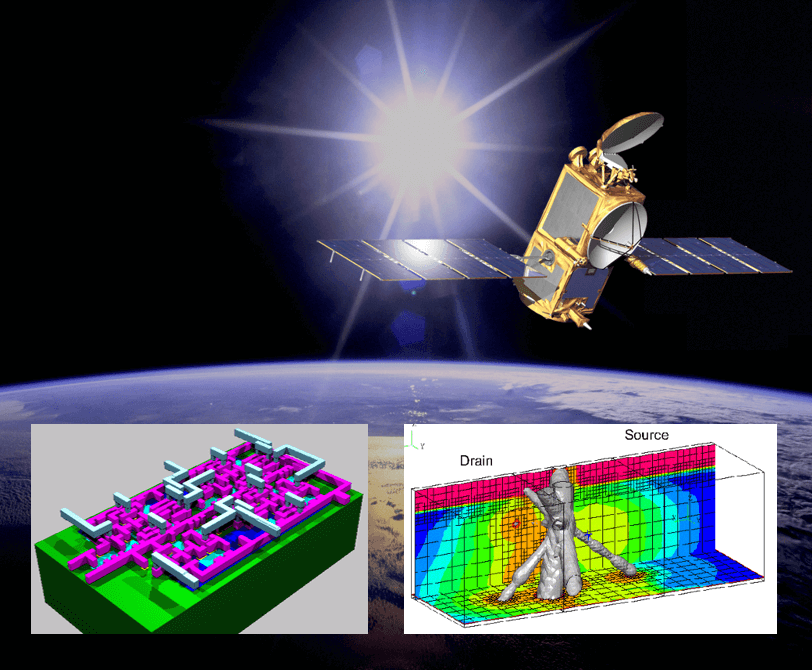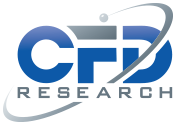Since its founding in 1987 in Huntsville, Alabama, CFD Research has been providing breakthrough technologies and subject matter expertise to support national space programs and missions including critical NASA efforts such as the Space Shuttle Challenger Solid Rocket Motor (SRM) redesign and post Columbia Return-to-Flight. CFD Research is now supporting the development of NASA’s post space shuttle heavy lift capabilities including the Space Launch System (SLS), Lunar and Martian human landing systems, supersonic/hypersonic aerodynamic decelerators, and other programs. CFD Research has been there and will continue to provide impacts to on-going and future national programs.
Significant Contributions to US Space Efforts
Rocket Fuel Tank Sloshing

CFD Research, in support of and in collaboration with NASA MSFC created a state-of-the-art method for assessing propellant tank slosh damping and applied it to SLS hardware to enable the future successful flights of EM-1 and EM-2. NASA MSFC specifically recognized the exceptional innovation and technical achievement with a Silver Achievement Medal for the development of methodology to predict propellant slosh damping where the traditional methods are not valid.
A second acknowledgement was also made, this one for the prestigious MSFC Invention of the Year. This award is given in recognition of a recently patented invention which has made the greatest contribution to a NASA program or has had the greatest commercialization success. CFD Research was once again a key contributing member of a blended team that developed the award winning Variable-Aperture Reciprocating Reed Valve technology.
Launch Vehicle Acoustic Environment and Acoustic Loading Prediction

The vibro-acoustic environment induced by acoustic energy resulting from the propulsion system of launch vehicles during liftoff is of great concern for the integrity of the launch complex, the vehicle itself and the vehicle payloads. CFD Research developed physics-based computational software technology for analyses of plume structures and modeling of complete launch vehicles with multiple plumes interacting with full launch pad geometric models.
This technology and associated analyses help defining liftoff environments for vehicle designs such as NASA’s Space Launch System (SLS) and future heavy-lift launch vehicle. This capability offers launch vehicle acoustics engineers accurate, quantitative acoustic loading predictions from first principles CFD/CAA simulations for specific launch vehicle configurations rather than reverting to scaling from historical vehicle measurements with many approximations in the scaling rationale.
Lander Soil Erosion and Impact

Propulsive spacecraft landing in extra-terrestrial environments poses a high risk for space exploration missions. The interaction of the plume with the regolith of the unprepared landing surface results in high velocity dust and debris particles that may impact the landing vehicle or nearby structures. The evolution of the resulting plume-generated crater can have an adverse effects on the landing vehicle dynamics due to plume flow reversal at the most critical point in the landing sequence. Severe damage of the landing area may be detrimental to safe vehicle landing attitudes and to post-landing crew surface operations.
CFD Research, in collaboration with NASA MSFC, has developed an efficient plume-surface interaction (PSI) modeling approach where the plume gas and particle mixture are represented in a multi-phase fluid simulation and the particle physics interactions for complex regolith compositions are accounted for with novel models. These models have been advanced to account for multi-component compressible flow and poly-disperse spherical and irregular particle shape mixtures that dominate lunar regolith characteristics. This approach uses the highly scalable Loci computational framework and has been used by NASA engineers for large scale landing area problems with impressive results including lander vehicle motion.
Space and Nuclear Radiation Effects in Electronic Devices and Circuits

High energy radiation in the natural space environment or from man-made radiation sources can degrade microelectronic and photonic components (semiconductor devices and circuits). As technologies evolve toward higher levels of complexity through integration, their susceptibility to adverse radiation effects can increase dramatically. Development of radiation-hardened components requires extensive investigation and optimization of the electronics design and/or fabrication processes.
CFD Research offers scientific/engineering expertise and advanced modeling tools for analysis of radiation effects from single-event (ion strike), total ionizing dose, and displacement damage phenomena in devices and circuits. We are continuously exploring and developing a variety of approaches to make devices and integrated circuits resilient to radiation. We offer engineering expertise across a broad application space including digital, analog, mixed-signal, power electronics, photovoltaics, and specialized devices (e.g., sensors); using a variety of semiconductor technologies including silicon, silicon germanium, silicon carbide, gallium nitride and other III-Vs, and others.
Select Customers Served




